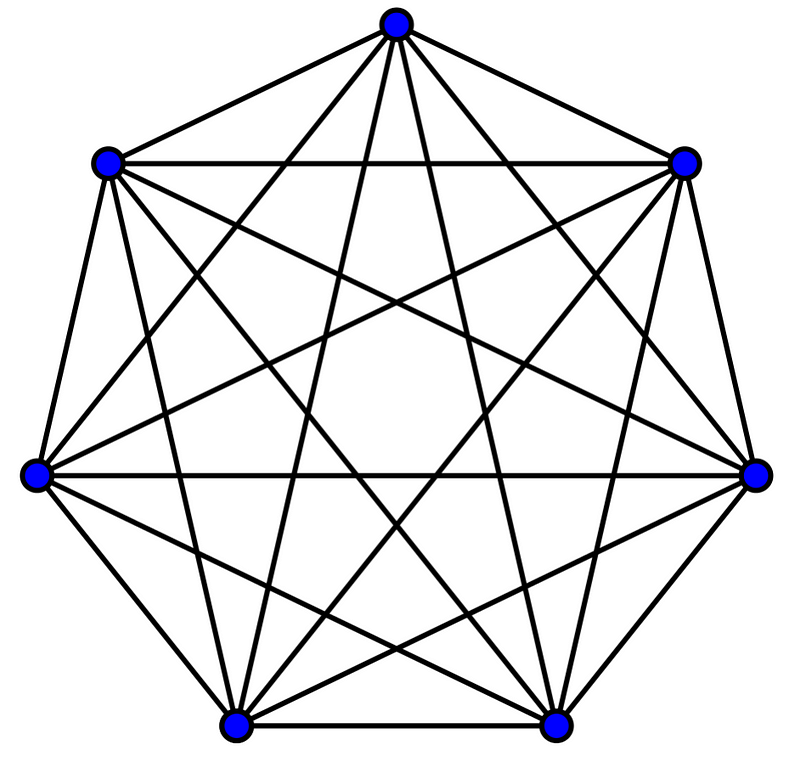Unlocking the Secrets of Patterns: A Dive into Ramsey Theory
Written on
Chapter 1: Understanding Ramsey Theory
Have you ever pondered why certain patterns manifest in what seems to be random situations? For instance, why do specific groups of friends consistently gather together, regardless of where they are seated? Or why do certain color combinations inevitably clash? These intriguing questions lie at the heart of Ramsey Theory. This captivating area of mathematics delves into the study of patterns and their inherent properties, finding relevance in domains such as computer science, economics, and social sciences. In this article, we will outline the fundamentals of Ramsey Theory and explore how it assists in identifying order within chaotic systems. Additionally, we will look into the history, applications in graph theory and combinatorics, and real-world instances of its utility.
What is Ramsey Theory?
Ramsey Theory focuses on the emergence of patterns within random structures. Named after the mathematician Frank Ramsey, who introduced its principles in the 1930s, this theory seeks to address questions such as: "What size must a structure be to ensure the presence of a specific pattern?"
For example, consider a party with six attendees. How many of them need to be friends to guarantee that at least one group of three people are all friends, or at least one group of three are all strangers? This type of inquiry exemplifies the kind of questions Ramsey Theory can resolve.
This expansive field encompasses various sub-disciplines, including graph theory, combinatorics, and number theory. The principles of Ramsey Theory find applications across numerous areas, such as computer science, physics, and biology.
In the next section, we will delve into how Ramsey Theory is applied in graph theory to examine the properties of graphs.
Ramsey Theory in Graphs
Graph theory is a mathematical subfield centered on the study of graphs, which are structures made up of vertices (points) and edges (lines connecting pairs of vertices). Ramsey Theory plays a crucial role in graph theory by investigating the existence of patterns within these graphs.
A key concept in graph theory is the complete graph, where every pair of vertices is connected by an edge. For instance, a complete graph with four vertices can be illustrated as follows:

Ramsey Theory seeks to determine the necessary size of a complete graph to guarantee the existence of specific patterns. For example, how many vertices must a complete graph possess to ensure either a complete subgraph with a specified number of vertices or one with no more than a certain number?
The answers to these inquiries are encapsulated in Ramsey numbers, which denote the minimum number of vertices required in a complete graph to guarantee a certain pattern exists. For instance, the Ramsey number R(3,3) indicates the smallest number of vertices needed in a complete graph to ensure either a complete subgraph with three vertices or one with no more than two vertices.
Although Ramsey numbers for small values of k and l have been well-studied, determining their exact values for larger integers remains a challenging and unresolved issue.
Applications of Ramsey Theory
Ramsey Theory boasts a diverse range of applications across various mathematical fields and beyond. Here, we will highlight some real-world examples of its use.
One significant application of Ramsey Theory is found in computer science, particularly in the design and evaluation of algorithms. For instance, it can help create efficient algorithms for searching extensive databases or networks for specific patterns, as well as assess the performance of these algorithms regarding efficiency and scalability.
In economics and social sciences, Ramsey Theory aids in modeling the behavior of complex systems. It can be employed to analyze the formation of social networks or the dissemination of information within a population, as well as to study market behaviors and other economic phenomena.
Furthermore, Ramsey Theory extends its utility to physics and biology, where it is used to model complex systems. For example, it can be applied to investigate network properties in biological systems, like the human brain or bacterial colonies, as well as to analyze the dynamics of physical systems, including fluid flow or wave propagation.
In summary, Ramsey Theory's versatility and significance in tackling real-world challenges underscore the importance of mathematical concepts in diverse fields.
Conclusion
Ramsey Theory offers profound insights into how patterns arise in seemingly chaotic structures. Its applications extend across multiple disciplines, from computer science to biology, demonstrating its crucial role in addressing a variety of real-world issues.
The first video titled "Why complete chaos is impossible || Ramsey Theory" explores the principles behind Ramsey Theory and discusses its implications in understanding chaotic systems.
The second video, "CO6 What is Ramsey Theory?" provides a comprehensive overview of Ramsey Theory, highlighting its foundational concepts and practical applications.